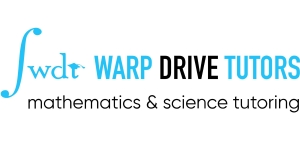IB® Higher Level Applications and Interpretation
Some Basics:
This is probably the most diverse mathematics course taught in schools. The pure mathematics is non-trivial comprising much of the BC calculus curriculum, but it also includes college level statistics, and college level linear algebra. The emphasis is on using the mathematics to solve the types of problems which might be encountered by engineers, economists and scientists. The course includes one piece of coursework (Internal Assessment) worth 20% of the grade, two calculator exams and one problem solving exam. In line with the IB® ’s commitment to developing problem solving skills, many of the questions throughout all three papers require novel applications of the taught mathematics, adding another level of challenge.
Pure topics usually covered include:
- Sequences and Series: arithmetic and geometric, sum to infinity, amortization and annuities
- Functions: exponentials and logarithms, composite and inverse, graph transformations
- Modelling: curve-fitting to polynomials, trigonometric, exponentials, logarithmic
- Complex numbers: argand diagrams, CiS, reθ , products, geometrica applications
- Matrices: inverse of nxn using GDC, solving systems of linear equations, eigenvalues & eigenvectors, matrix geometry
- Trigonometry: unit circle, equations, radians
- Vectors: scalar product, cross product, equations of lines and planes, vector kinematics
- Differentiation: limits, chain, product and quotient rules, optimisation, L’Hopital’s rule, implicit differentiation, connected rates of change
- Integration: volumes, trigonometry, exponentials, logarithms, by inspection
- Differential Equations: separating variables, numerical solutions to first and second order, phase portraits, tangent fields
Statistics topics usually covered include:
- Graphs: histograms, cumulative frequency curves, box and whisker plot
- Regression: correlation, regression equation, non-linear regression, spearman’s rank
- Random Variables: pdfs, expectation, Binomial, normal, Poisson, linear transformations
- Hypothesis testing: critical values, type II errors, Chi squared, degrees of freedom, t-tests
- Central Limit Theorem: n independent normal variables linearly combined
- Probability: successive events, conditional, Markov chains, transition matrices
Discrete topics usually covered include:
- Graph Theory: adjacency, indegrees and outdegrees, subgraphs, tress
- Adjacency matrices: k-length walks, weighted tables, transition matrices
- Algorithms: Kruskal, Prim, Chinese Postperson, travelling salesman, nearest neighbour
- Voronoi: nearest neighbour interpolation, toxic waste problem
Linear Algebra topics usually covered include:
- Matrix geometry: reflections, rotations, enlargements, compositions
- Inverse: 2×2 inverse by hand, nxn inverse with GDC, solving equations
- Eigenvalues & Eigenvectors: Char poly, diagonalization of 2×2, applications
Typical problem areas include:
- Developing and understanding of the purpose and limitations of the statistical techniques
- Identifying saddle points with phase portraits
- Defining and linking variables to solve problems involving connected rates of change
- Application of vector geometry in real life contexts
- Using logs to magnify relationships in models
- Finding a suitable IA topic
How a tutor can help:
This course includes hundreds of seemingly different techniques, and trying to memorise each of them would be impossible! Luckily, within each topic, there are a few underlying themes: modelling, rates of change, confidence in data and optimisation to list a few. Grounding each of these themes in your experience of the world enables you to see how the mathematical techniques are applied. Of course, since everyone’s experiences of the world are different, it is rare that every student in a classroom connects with the material at this level. Our tutors understand that the right analogy will unlock the entire concept for you, and working one-to-one allows them to choose examples they know will resonate. Once the concepts in this course make sense, you will appreciate that many of the seemingly disparate techniques are actually just variations to account for small changes to the context of the problem and the solutions will become intuitive.
Students looking to secure a 7 in this course may find that too quickly, they exhaust the practice questions offered in the textbook, especially as the course is new and there are no past papers. Our tutors can source or even write suitable questions so that top students can get the practice they need on the most demanding questions.
